This article was co-authored by Karen Litzy, PT, DPT. Dr. Karen Litzy, PT, DPT is a licensed physical therapist, international speaker, owner of Karen Litzy Physical Therapy, PLLC, and the host of the Healthy Wealthy & Smart podcast. With over 20 years of experience, she specializes in a comprehensive approach to practicing physical therapy utilizing therapeutic exercises, manual therapy, pain education, and home exercise programs. Karen holds a Master of Science in Physical Therapy and a Doctor of Physical Therapy from Misericordia University. Karen is a member of the American Physical Therapy Association (APTA) and is an official spokesperson for the APTA as a member of their media corps. She lives and works in New York City.
wikiHow marks an article as reader-approved once it receives enough positive feedback. This article has 16 testimonials from our readers, earning it our reader-approved status.
This article has been viewed 6,148,489 times.
Looking for that feeling of relief you get when you pop your back? Cracking your back feels good because it can release tension and increase your range of motion. We'll explain the safest ways to crack your back, both on your own and with someone's help. Plus, we'll walk you through all of the best exercises and stretches for your back so you can loosen up and release tension to get some relief.
Steps
Using High-Success Methods
-
1Stretch your back over the edge of your bed. Another way to achieve more extension is to use the edge of your bed as a fulcrum point, so that your head can dip below the level of your spine. This position is effective for cracking the mid back primarily.
- Lie down on your back on a bed, with everything above your shoulder blades extended over the edge.
- Relax your back and let your head and arms slowly extend towards the floor, breathing out entirely as you do it.
- After each downward extending motion, hold for about 5 seconds and then do a full sit-up to get back to the original position and take a full breath in. Repeat as necessary.
- This movement carries a little greater risk of injuring your spine, so maybe ask a companion to be a spotter to make sure you can do it safely.
Tip: This movement is also great for strengthening your abdominal muscles.
-
2Get "picked up" from behind. A possibly more effective method of adjusting the mid back is getting a hug from behind because extending the thoracic spine is a little easier from this direction, assuming the person doing it is strong enough to lift you off the ground by a few inches or so. Instead of using their hands to crack your back, the person lifting you can use gravity and their own chest as they arch back (which takes less coordination).
- Cross your arms across the front of your body and allow a stronger, taller person to hug you from behind and grab your elbows for support.
- After fully exhaling, give a signal and allow the person to lift you off the ground while simultaneously squeezing you and extending your mid back.
- This maneuver is a little risky for both participants because of the greater forces on the spines and shoulder joints.
Advertisement -
3Get a "bear hug." A very common way to crack the mid back is to have someone give you a tight hug from the front. Some extension is needed to release the joints and it certainly helps if the person performing the hug is stronger and taller than you so they can get good leverage. Be careful though, because broken ribs and lung injuries are possible.[1]
- Stand face-to-face with a person of equal or greater size.
- Allow the person to hug you and have them clasp their hands near the area that you want to crack while you relax your arms at your sides.
- After breathing fully in and out, give a signal for the person to squeeze harder with their hands in a quick thrusting manner (this takes some practice and coordination), which will extend the spine somewhat and likely release a few joints.
- For women with large or sensitive breasts, this maneuver might not be appropriate.
-
4Don't let someone crack your back on the floor. There is a technique that should only be attempted by someone with adequate training, such as an osteopath or chiropractor. There are laws that prevent some health professionals from doing this maneuver without adequate training. If you are interested in having your back cracked in this way, talk to a licensed professional.
Trying Low-Risk Exercises
-
1Extend your spine with help from your hands. While slowly extending your spine in a controlled manner, you can reach around your back and put pressure on the area that has the most tension, which will induce a little more focused extension there. This movement requires a little more flexibility, especially from your upper body and arms.
How to Extend Your Spine with Your Hands
Stand and slowly extend your back.
Slide your hand behind and slowly push down on your spine while extending your stomach forward. Use your dominant arm or hand so as to have more control and strength.
Hold for 10–20 seconds and try it 3-5 times daily depending on your condition.
The spinal area under the most pressure is likely to crack, especially if you have the flexibility to reach up towards the thoracic spine. -
2Add some spinal rotation while standing. The spine tends to have more range of motion from side-to-side than it does in extension, so rotation tends to be a safer or more forgiving motion.[2]Rotation of the spine can crack most areas of your back,especially the lumbar region or low back.
- While standing with your feet shoulder-width apart (for stability and balance), place your arms in front of you, bent at the elbows.
- In a controlled fashion, rotate your upper body as far as you can in one direction, then switch and do the other way a few seconds later.
- You can use some momentum by swinging your arms, but be careful not to go too far and risk pulling a muscle.
- Repeat as many times as necessary, but once you crack your back, it won't crack again at the same spinal segment for between 20–30 minutes or so. It takes that long for the joint to reset again.
-
3Use a foam roller. Rolling on a piece of firm foam is a good way to massage your back and it also increases the likelihood of cracking or popping some spinal joints, especially those in the mid back region (thoracic). Foam rollers are commonly used in physiotherapy, yoga and pilates.
How to Use a Foam Roller
You can find foam rollers at a sporting goods or big-box store — they're very inexpensive and nearly indestructible.
Place the foam roller on the ground, perpendicular to where you're going to lay your body.
Lie down on your back so that the foam roller is beneath your shoulders.
Put your feet flat on the floor, bend your knees, and lift up your lower back so it rolls over the foam in a back and forth manner.
Never lie with your low back flat on a foam roller because it will hyperextend the low back. Always lean to one side while rolling the low back on a foam roller.
Use your feet to move your body over the foam, so that your entire spine is massaged (at least 10 minutes). Repeat as many times as necessary, although your muscles might be a little sore after the first time your use a foam roller. -
4Rotate your spine while sitting on the floor. Another way to rotate the lower half of your spine is to do it while sitting, which might feel more stable and easier to control. You can also use your arms and hands to induce a little more rotation without having to swing your body, which is likely a little safer.
- Sit on the floor with one leg bent at the knee and the other leg extended — it does not matter which side you start with because you'll switch and do both sides a few times.
- With the foot of the bent leg on the ground, push with it and rotate your torso in the opposite direction, using your hands to stabilize you and induce more rotation.
- Try to look back over your shoulder on the same side as your bent knee.
- Wear runners so your feet get more grip to push with.
-
5Sit in a chair to get more leverage. Rotating your spine while sitting in a chair is helpful because you can grab parts of the chair to gain additional leverage and rotation. Spinal joints need to go slightly beyond their normal range of motion in order to crack, so using a chair to achieve that may be your best bet.[3]
- Sit facing forward on a stable chair. While trying to keep your buttocks and legs in the same position, rotate as far as you can in one direction (holding for a few seconds), then go in the other direction. Breathe normally while doing this.
- Grab on to the sides or the top of the chair to gain more leverage — a wooden chair works well in this regard.
- In this position, your lower lumbar spine is the most likely to crack or release.
-
6Do a twisting stretch while lying on your back. Another way to crack your mid-to-lower back is to lay on your back (supine) and use your leg / knee as a lever in order to achieve rotation. Make sure the floor is cushioned or padded for the most comfort.
- Lie flat on your back on a cushioned floor, raise a leg to your chest while bending it at the knee. Then pull on the outside of your knee towards the floor with your opposite hand, which will create rotation in your lower back and hips.
- Your may feel the low back and/or hip joints release and crack with this move.
- This is a similar position that a chiropractor or osteopath will put you in for adjusting your low back and hips (sacroiliac joints).
Safely Stretching Your Back Muscles
-
1Stretch your back muscles first. Muscle tension in your back is often relieved with simple stretches without the spinal joints making cracking or popping sounds. Too much joint cracking may damage the joint tissues and accelerate a type of arthritis known as osteoarthritis (the wear and tear type).[4] As such, aim for a good muscle stretch to start with and don't focus too much on trying to achieve any cracking sounds.
Guide to Stretching Your Back Muscles
Do this simple stretch 3-5 times daily depending on the degree of tension in your back.
- Lay on your back on an even surface that has some padding (such as carpet or a yoga mat) so your spine doesn't get bruised.
- Bring both knees up to your chest with your arms until you feel some mild-to-moderate stretching within your back muscles.
- Hold for about 30 seconds.Warnings
- Don't hold your breath. Instead, you should breathe deeply and exhale as you relax into the stretch.
- Never aggressively bounce or force motion into your spine or other joints as this could cause injury.You may have to slowly rock forward and backward in this position to get a better muscle stretch, but always do so in a controlled, gentle fashion. -
2Stretch your back by elongating your spine. Another type of stretch can be done while on your knees and facing the floor (prone), which is similar to a yoga position known as the child's pose.[5] Again,the goal of this position is to stretch the back muscles and the spine,but it may not lead to any cracking sounds if you avoid twisting or extending your back.
- Kneel on a padded surface with your buttocks resting on the soles of your feet. Then bend forward at the waist, walking your fingers forward as far as you can go while trying to touch your nose to the floor.
- Hold this stretch for about 30 seconds while continuing to breathe. Depending on the amount of tension in your back, try this stretch three to five times daily.
- You may not be very flexible, or your belly may get in the way, but try to extend your arms as far forward as you can until you can feel your back muscles and spine stretchat least a little bit.
-
3Extend your spine while standing. Extension of the spine is a movement that often creates a cracking sound, butyour spinal column has fairly limited motion in this direction, so don't be too aggressivewhile doing it.[6] Extending your back doesn't really stretch your back muscles, but you may feel some pulling in your chest or abdominal muscles.
- Place both hands behind your head and slowly push your head backwards while arching or extending your spine so that your stomach sticks out.
- Hold the position for 10–20 seconds and consider doing it three to five times daily depending on the amount of tension in your back.
- The area of your back most likely to crack with this position is the thoracic region, which is the part of your spine between your shoulder blades.
- Make sure your feet are firmly planted and shoulder width apart so that you maintain balance and reduce the risk of falling over. Keep your eyes looking forward to prevent overextending your neck and head backwards.
Expert Q&A
-
QuestionIs it safe to crack your back?
 Karen Litzy, PT, DPTDr. Karen Litzy, PT, DPT is a licensed physical therapist, international speaker, owner of Karen Litzy Physical Therapy, PLLC, and the host of the Healthy Wealthy & Smart podcast. With over 20 years of experience, she specializes in a comprehensive approach to practicing physical therapy utilizing therapeutic exercises, manual therapy, pain education, and home exercise programs. Karen holds a Master of Science in Physical Therapy and a Doctor of Physical Therapy from Misericordia University. Karen is a member of the American Physical Therapy Association (APTA) and is an official spokesperson for the APTA as a member of their media corps. She lives and works in New York City.
Karen Litzy, PT, DPTDr. Karen Litzy, PT, DPT is a licensed physical therapist, international speaker, owner of Karen Litzy Physical Therapy, PLLC, and the host of the Healthy Wealthy & Smart podcast. With over 20 years of experience, she specializes in a comprehensive approach to practicing physical therapy utilizing therapeutic exercises, manual therapy, pain education, and home exercise programs. Karen holds a Master of Science in Physical Therapy and a Doctor of Physical Therapy from Misericordia University. Karen is a member of the American Physical Therapy Association (APTA) and is an official spokesperson for the APTA as a member of their media corps. She lives and works in New York City.
Physical Therapist No, it's not something you should intentionally try to do on your own. It's best to see a physical therapist to make sure that type of movement is safe.
No, it's not something you should intentionally try to do on your own. It's best to see a physical therapist to make sure that type of movement is safe.
Warnings
- If you or your partner start to feel pain (especially if it's sharp or burning pain) while trying to crack a spinal joint, stop immediately.⧼thumbs_response⧽
- Consult a chiropractor for additional stretches and/or spinal manipulation techniques. Adjusting your own spine (or others if you're untrained) carries risks, so proceed conservatively and with caution.⧼thumbs_response⧽
- It's best to see a physical therapist to help you determine whether it's safe to crack your back.[7]⧼thumbs_response⧽
- If you have conditions like osteoarthritis, osteopenia, or neurological issues such as weakness in your legs, you should not try to crack your back.[8]⧼thumbs_response⧽
References
- ↑ http://jaoa.org/article.aspx?articleid=2093465
- ↑ https://lumbarspineassessment.wordpress.com/examination/active-range-of-motion/
- ↑ http://www.spine-health.com/treatment/chiropractic/chiropractic-adjustment
- ↑ http://www.orthop.washington.edu/?q=patient-care/articles/arthritis/frequently-asked-questions-about-arthritis.html
- ↑ http://www.yogabasics.com/asana/child/
- ↑ https://lumbarspineassessment.wordpress.com/examination/active-range-of-motion/
- ↑ Karen Litzy, PT, DPT. Physical Therapist. Expert Interview. 27 August 2020.
- ↑ Karen Litzy, PT, DPT. Physical Therapist. Expert Interview. 27 August 2020.
About This Article
To crack your back, try doing a supine twist. First, lie down on the floor with one leg bent and one leg extended. Then, bring your bent knee over your extended leg and toward the floor. Keep your shoulders flat on the ground. Finally, switch legs and repeat. You can also try to track your back using the back of a short chair. First, sit in a chair with a backrest that comes up to the middle of your back. Then, place both of your hands on the back of your head, and slowly lean back in the chair until your back cracks. Move forward in your seat to crack higher up on your back, or move backward to crack lower on your back. However you crack your back, remember to be gentle and move slowly so you don’t hurt yourself. If you’re experiencing back pain, talk to your doctor before attempting to crack your back on your own. To learn more from our Chiropractor co-author, such as stretches to try to loosen up, keep reading the article!
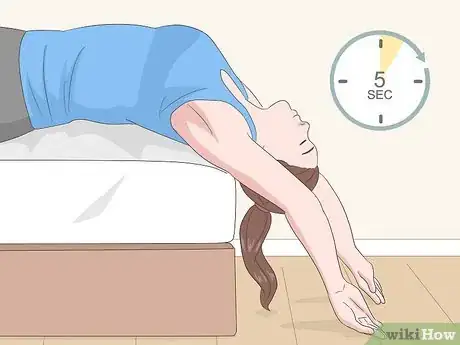
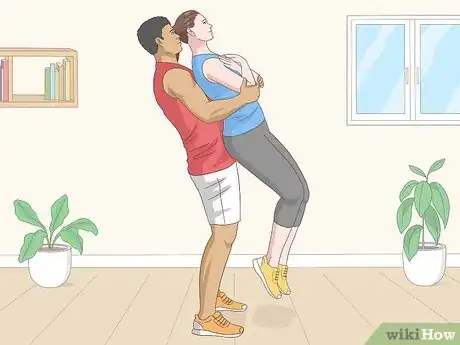
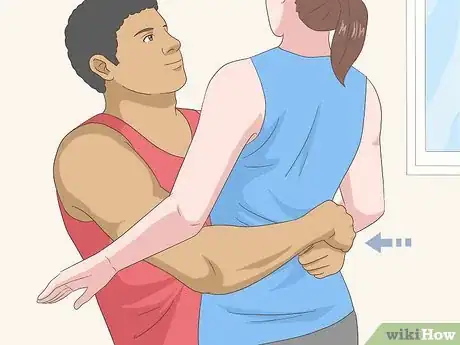
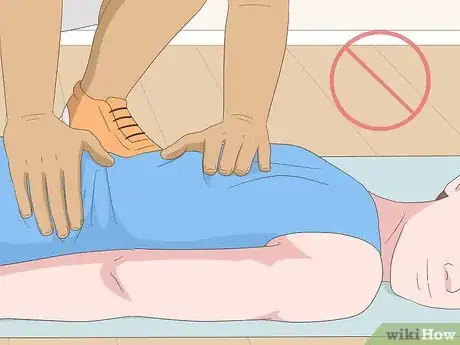
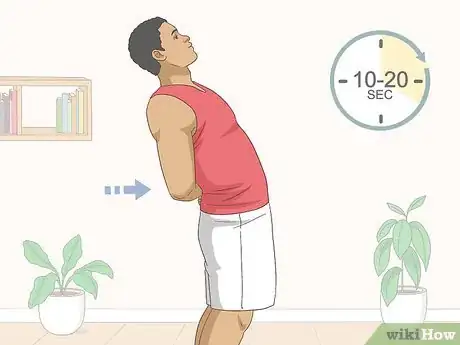
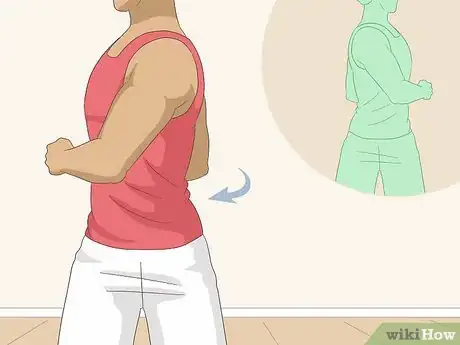


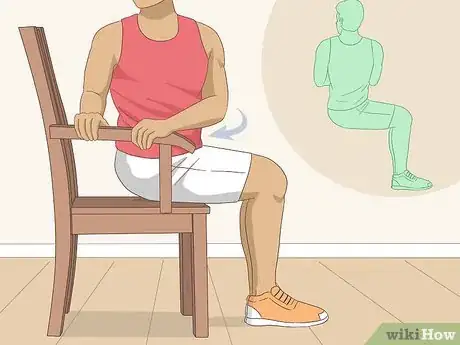


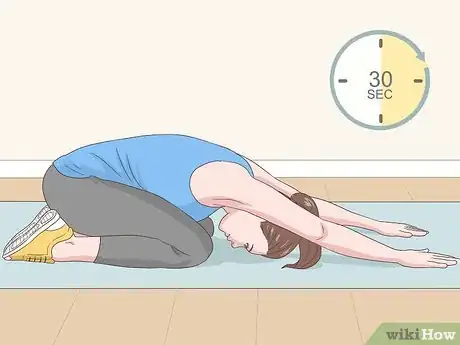
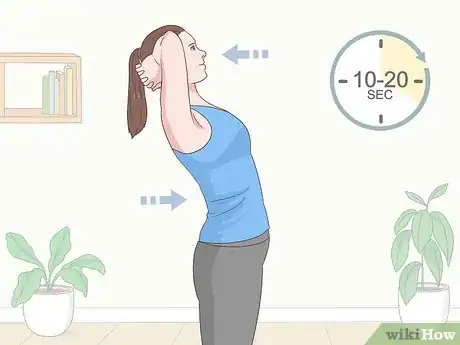



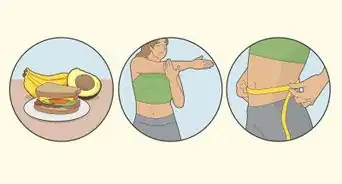
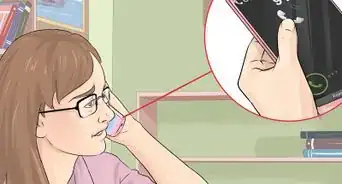
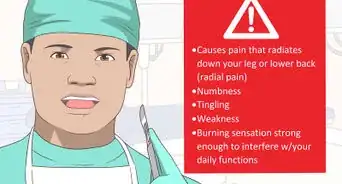
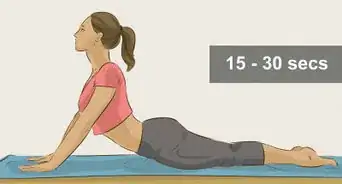
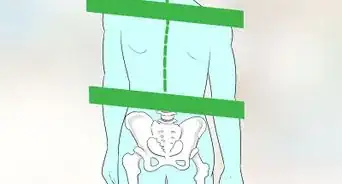

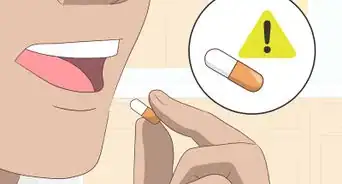

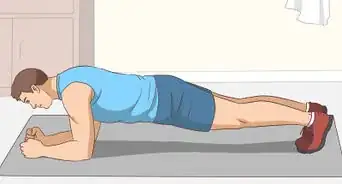
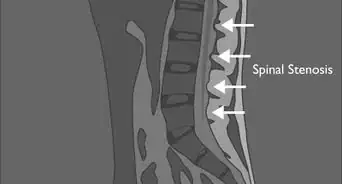











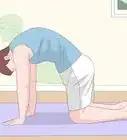
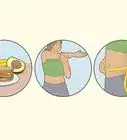




































Medical Disclaimer
The content of this article is not intended to be a substitute for professional medical advice, examination, diagnosis, or treatment. You should always contact your doctor or other qualified healthcare professional before starting, changing, or stopping any kind of health treatment.
Read More...